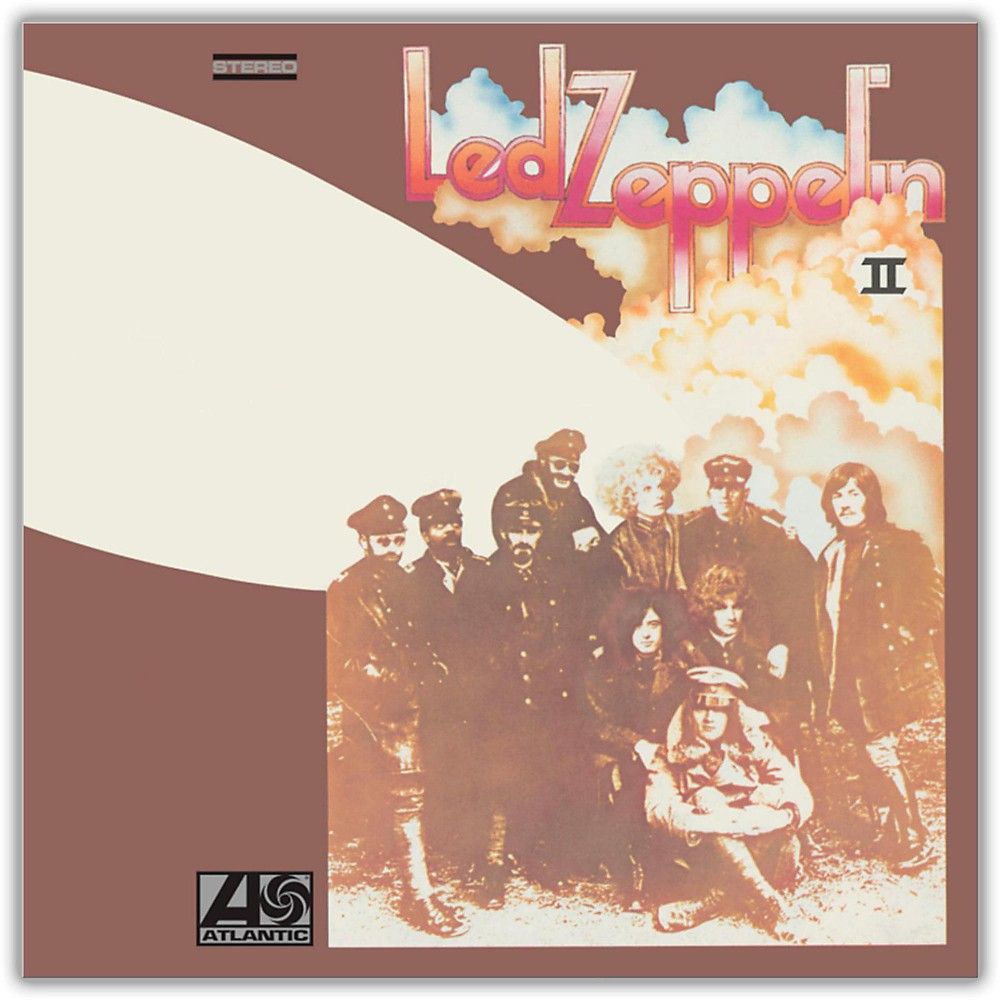Blog 04/24/2021 - von Richtofen "The Red Baron"
MHT Salutes the Ace of Aces in WWI: Manfred Albrecht “Freiherr” ("Free Lord" - a German title of nobility that is equal rank to a "Baron") von Richthofen (2 May 1892 – 21 April 1918), known in history as Baron von Richthofen, and famously in aviation lore as the "Red Baron", was the premier German WWI fighter pilot. He is considered the WWI ace-of-aces, being officially credited with 80 air combat victories verified with a high degree of accuracy. There was also a slew of unconfirmed victories that would put his actual total as high as 100 or more. Richthofen's early victories and the establishment of his reputation coincided with a period of German air superiority, but he achieved many of his latter successes against a numerically superior enemy, who flew fighter planes that on the whole were better than his own.
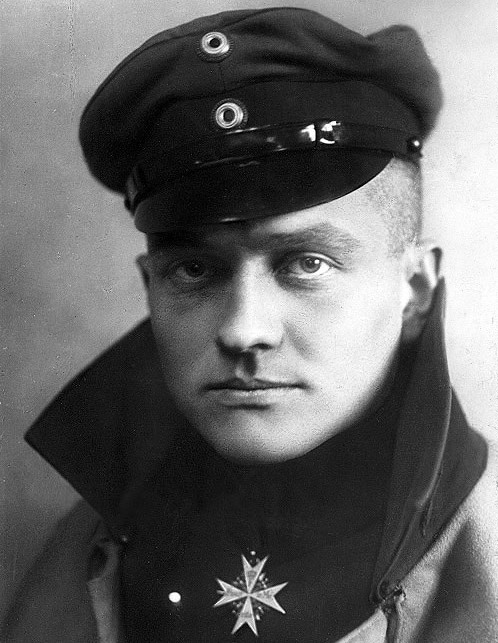
A calvary officer at wars start, Richthofen was unhappy with static trench warfare but a chance meeting with German ace fighter pilot Oswald Boelcke led him to enter “Fliegertruppe” (pilot) training in October 1915. In February 1916, Manfred "rescued" his younger brother Lothar from the boredom of an infantry training command in Luben and encouraged him to transfer to the Fliegertruppe.
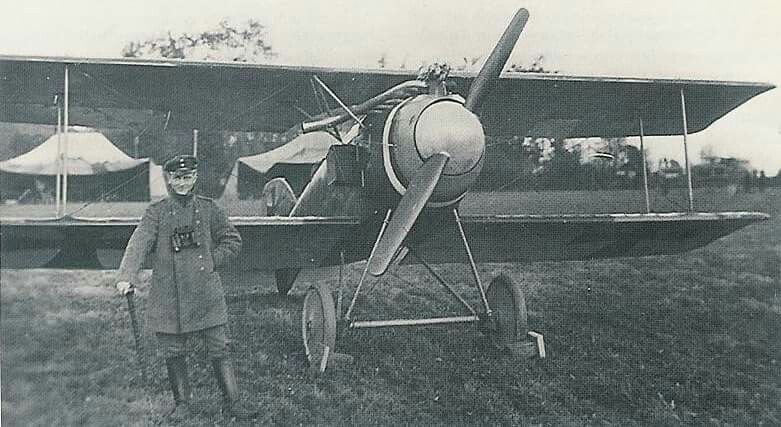
Richthofen scored his first confirmed aerial victory in the skies over Cambrai, France, on 17 September 1916. He reached 16 kills in an Albatros D.II receiving the Pour le Mérite, the highest military honor in Imperial Germany at the time and informally known as "The Blue Max" in January 1917.
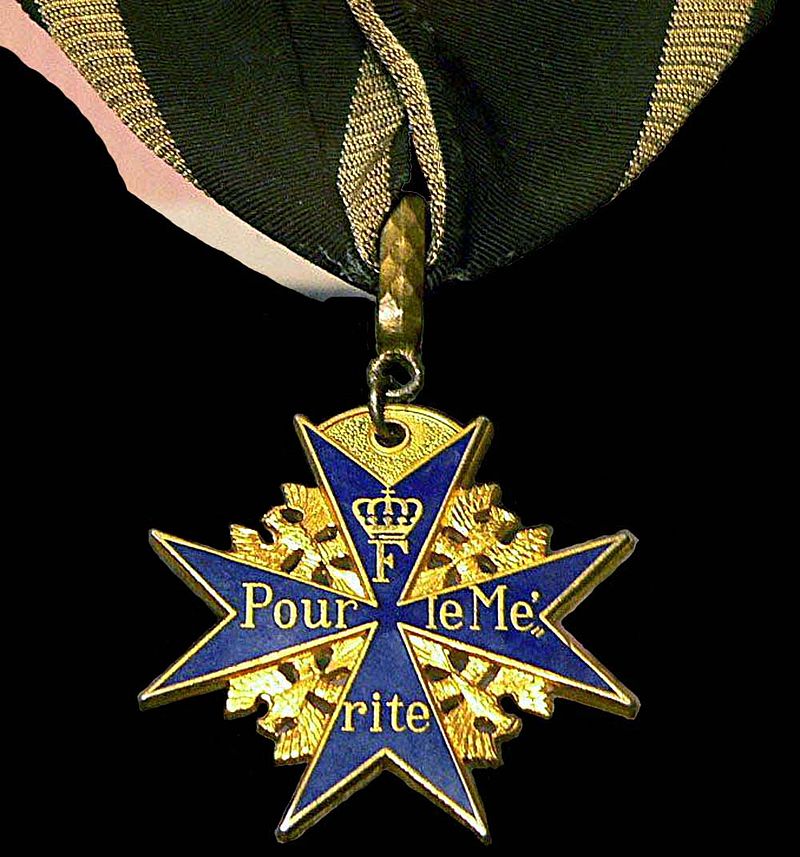
The Pour le Mérite was founded in 1740 by King Frederick II of Prussia. In January 1810, during the Napoleonic wars, King Frederick William III decreed that the award could be presented only to serving military officers. The “Blue Max” gained international fame during WWI. Although it could be awarded to any military officer, its most famous recipients were the pilots of the German Army Air Service (Luftstreitkräfte), whose exploits were grandly celebrated in wartime propaganda. German Aces Max Immelmann and Oswald Boelcke were the first airmen to receive the award, on January 12, 1916. Junior officers (army captains and lieutenants and their navy equivalents) accounted for only about a fourth of all awards. Several famous Kapitänleutnant U-boat commanders, including Lothar von Arnauld de la Perière (U-35), Walther Schwieger (U-20) Otto Hersing (U-21) and Otto Weddigen (U-9), received the medal. The military class of the Pour le Mérite became extinct as a result of Kaiser William II's abdication as King of Prussia and German Emperor on 9 November 1918. This marked the end of the Prussian monarchy and it was never awarded thereafter; however, the honor continued to be recognized for, and worn by, previous recipients.
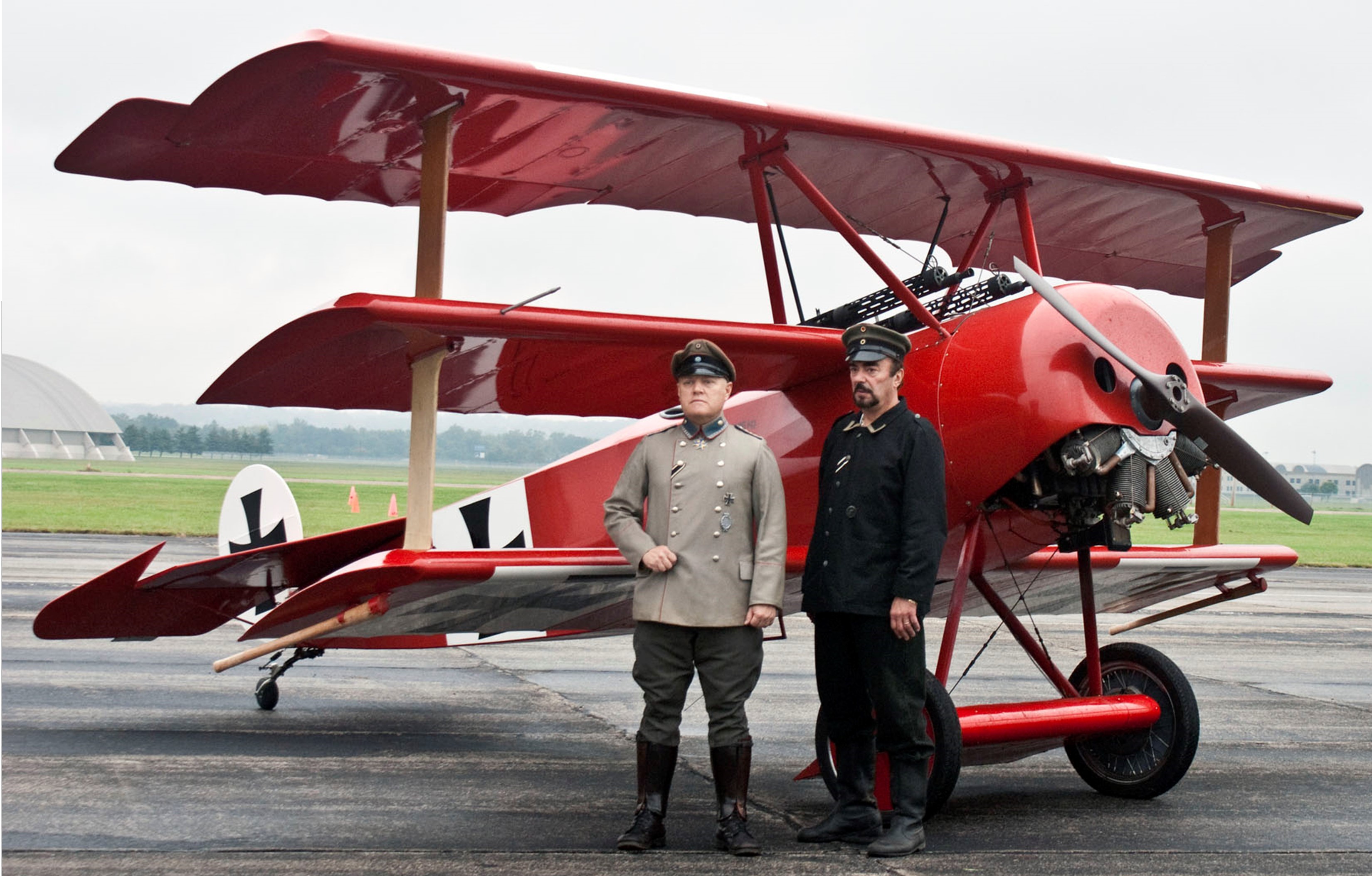
Richthofen took the flamboyant step of having his plane painted red when he became a squadron commander. Thus, was born his moniker as the Red Baron” when his Albatros D.III Serial No. 789/16 was painted bright red, in late January 1917, from which he first earned his name and reputation. His autobiography states, "For whatever reasons, one fine day I came upon the idea of having my crate painted glaring red. The result was that absolutely everyone could not help but notice my red bird. In fact, my opponents also seemed to be not entirely unaware [of it.]" Thereafter he usually flew in red schemed aircraft, although not all of them were entirely red, nor the brilliant scarlet beloved of painters and model-builders. He assumed command of the Jagdstaffel (fighter squadron, shortened to “Jasta”) 11 Squadron. which ultimately included some of the elite German pilots, many of whom Richthofen trained himself, and several of whom later became leaders of their own squadrons.
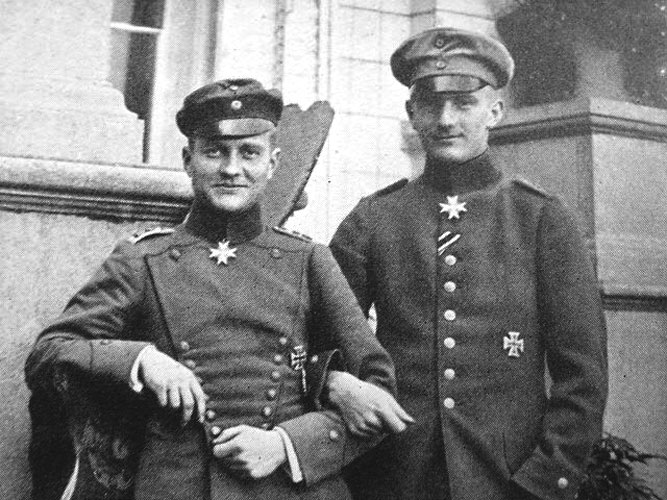
His younger brother Lothar would become one of his pilots that would command his own squadron. Lothar was far more daring and impulsive in his attacks than his coolly calculating brother Manfred and notched 40 confirmed kills earning the “Blue Max.” He was shot down twice by Sopwith Camels and once by anti-aircraft fire wounded all three times. He survived the war but ironically died as a commercial pilot when his aircraft’s engine failed taking off from Hamburg in 1922.
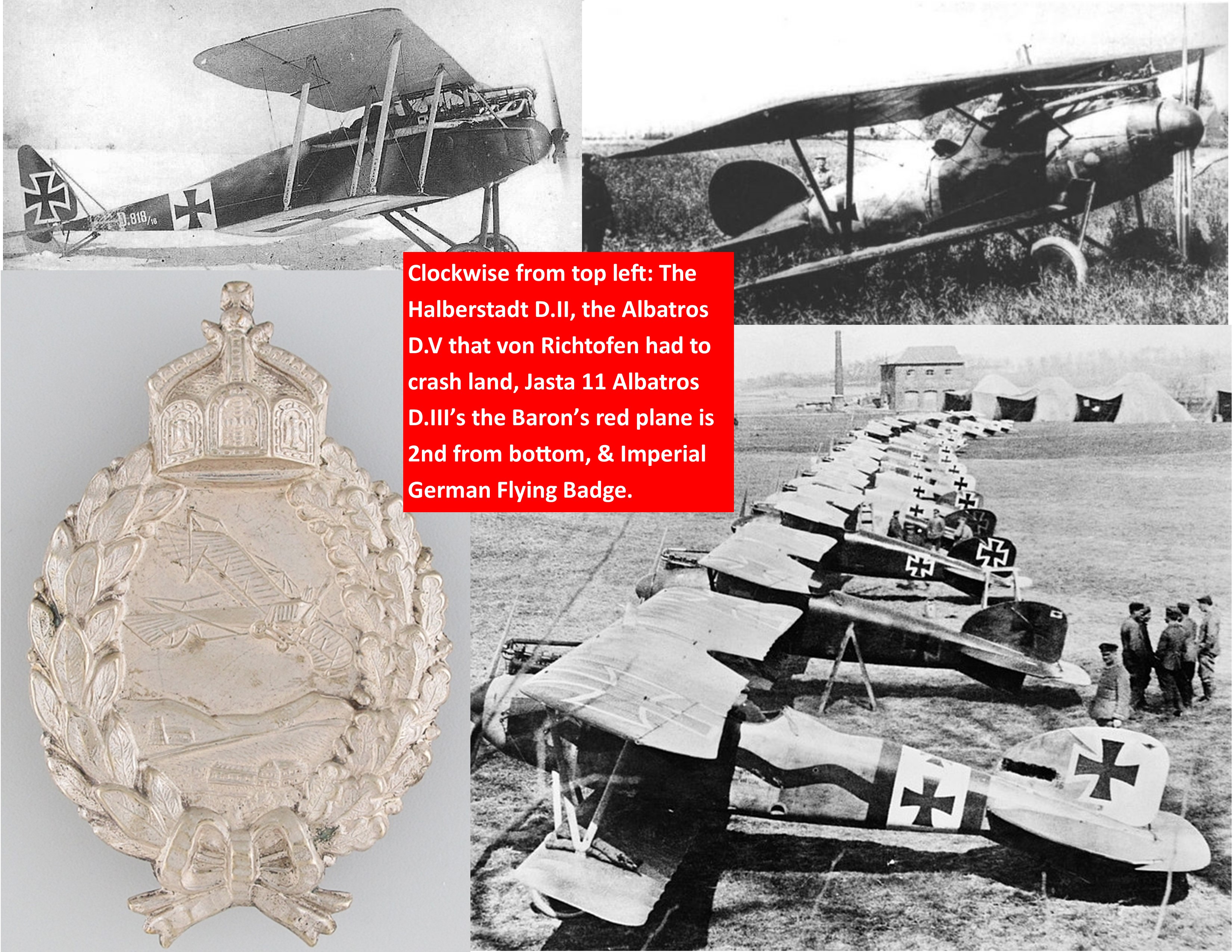
He used a combination of three aircraft an Albatros D.III, Halberstadt D.II & Albatros D.V for 45 of his victories. By June, 1917 he had become the first commander of the new larger "fighter wing" formations; these were highly mobile, combined tactical aviation units that could move at short notice to different parts of the front as required. Richthofen's new command, Jagdgeschwader (JG) 1, was composed of four fighter squadrons No. 4, 6, 10 & 11. JG 1 became widely known as "The Flying Circus" due to the unit's brightly colored aircraft and its mobility, including the use of tents, trains, and caravans to move up and down the front.
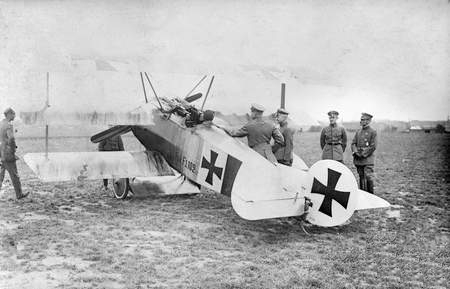
Richthofen flew his iconic red Fokker Dr.I triplane from late July 1917, the distinctive three-winged aircraft with which he is most commonly associated—although he did not use the Fokker exclusively until November when an improved version with strengthened wings arrived. Only 19 of his 80 kills were made in the red triplane despite the popular links between Richthofen and the Fokker Dr.I. He was shot down twice without injury but the third was not a charm. He was wounded in the head and barely escaped a deadly spin due to partial blindness and had to have multiple operations to remove bone splinters and would affect his flying in the future.
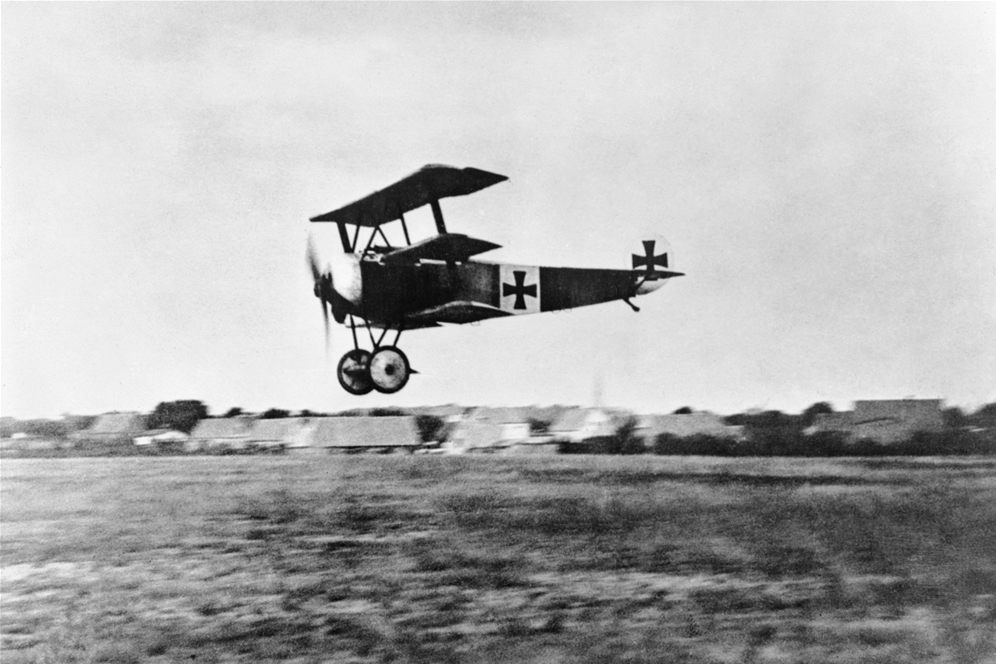
Richthofen received a fatal wound just after 11:00 am on 21 April 1918 while flying over Morlancourt Ridge near the Somme River from the ground by a .303 round. The Red Baron although fatally wounded but still managed to land his Fokker Dr.I 425/17 behind the Australian Imperial Force section of the lines. He was given a full military burial on the 22nd by the No. 3 Australian Flying Corps at Bertangles in northern France.
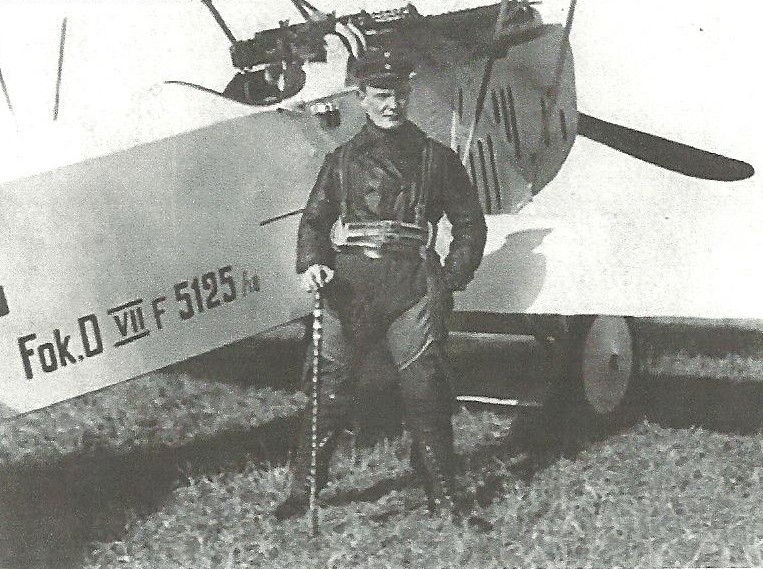
His command of JG 1 is taken by German ace, Hauptmann Wilhelm Reinhard as the Fokker DVII became the German fighter. Reinhard went down in a test flight on 3 July as Oberleutnant Hermann Goering (above with the Red baron’s walking stick) replaced Reinhard on 7 July and would become synonymous with the Luftwaffe in WWII. There was no glamour in trench warfare and few heroes in the artillery or machinegun death of no man’s land. By contrast there was still chivalry in the aerial warfare duels of the gallant knights of the air far above the barbwire, mud and misery of the trenches far below. Baron Manfred von Richthofen, the leading air ace of the war with 80 confirmed kills is shot down by ground fire barely above the trenches by an Australian machine gunner remains one of the significant ironies of The Great War.

"The Red Baron" was the true media star of WWI. It would be easy to assume - von Richthofen had a heck of a publicity team back in Imperial Germany as his nickname remains highly visible over a 100-years after his death in battle. Here are a sample of products using Manfred's nickname, who we doubt is getting any $$$ from Red Baron brand...Pizza, Bottle Cappers, Restaurants & Bars, Squeegees, Racing Teams, Tool Organizers, Phone Bezels, Models, Clocks, Gloves, Silver Snaps, High School Sports Teams, Goggles, Glue, Aviator Sunglasses, Onions, Women's Handbags, Wall-mounted Hand Dryers, High Score Savers, Pool Leaf Catchers, Peaches, Baby Onesies, Mugs, Aircraft APUs, Chairs & most importantly during the Chinese Coronavirus Crisis...Beer.
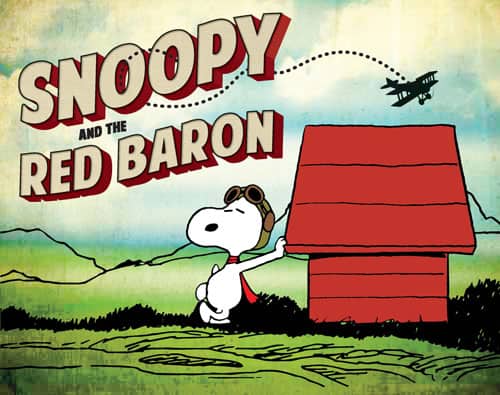
Almost everyone remembers the Schultz comic strip “Peanuts” knows of the feud between Charlie Brown’s dog Snoopy as the WWI flying ace whose Sopwith Camel doghouse usually came up short and ends with a "Curse You, Red Baron!" The Charles m. Schulz Museum stills send the “Snoopy and the Red Baron” Exhibition on the road or see it at the Museum in Santa Rosa, CA.
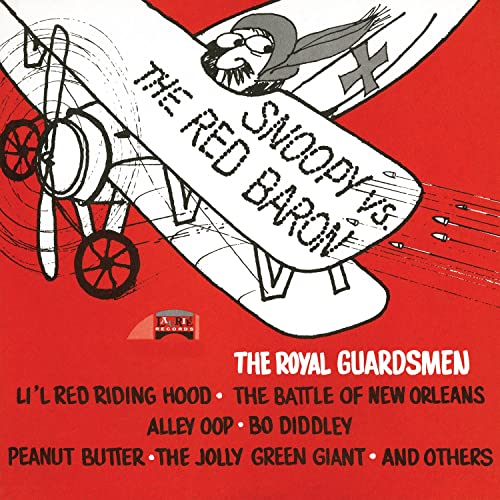
Those who remember the 1960's British Invasion have to remember the fake-news-mop-tops Royal Guardsmen from "Brit-Centric" Ocala, FL. Their "Come on Sloopy" rip-off called "Snoopy vs. The Red Baron" is an earworm novelty song that only another fake band "The Monkees" kept from getting to #1 on the Hot 100 To hear it click (note the 1965 goosestepping by the band members would be frowned on by the cancel culture today): https://www.youtube.com/watch?v=Oxzg_iM-T4E
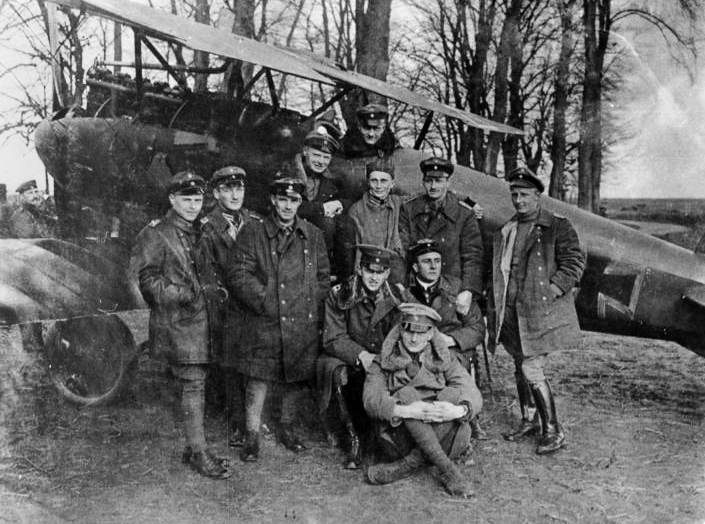
My real favorite usage is the picture of Richthofen sitting in his Albatross D.III with members of his Jasta 11 squadron around him that was converted by a rock album illustrator by cropping out the Red Baron and his plane and replacing five of the heads of the German aviators with the faces of the four band members plus a blonde actress. He added sunglasses and facial hair to many of the other pilots.
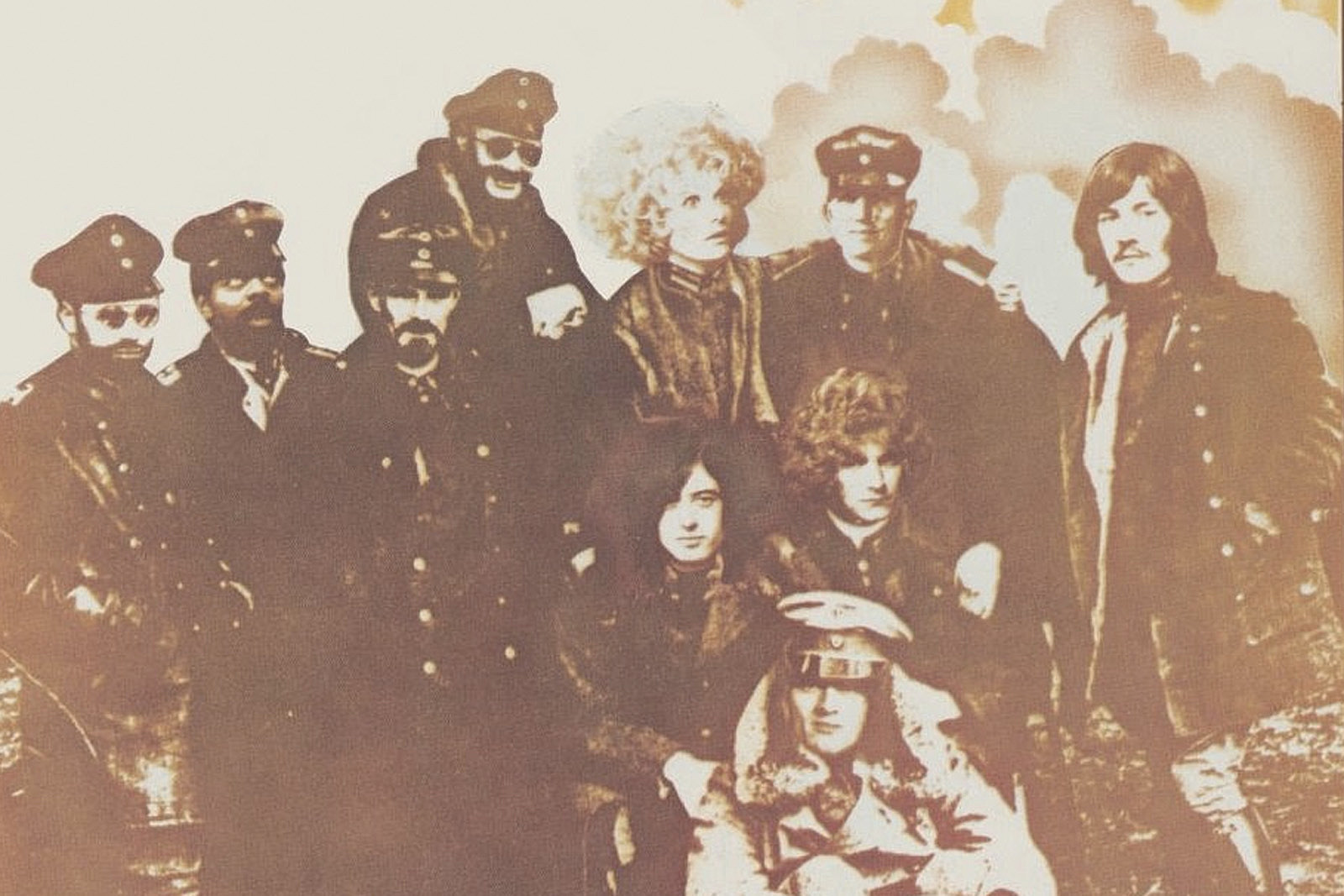
He created the cover for the greatest heavy metal album (that twice knocked the Beatles Abbey Road from #1 in 1969) by a band whose name has some context to WWI – Led Zeppelin II.
